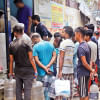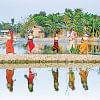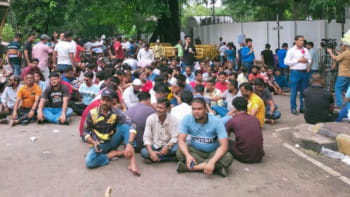Do not ignore the women suffering in silence for water

When we discuss water crisis in rural Bangladesh, we often talk about the coastal belt where approximately three crore people across 19 districts are said to lack access to safe drinking water. Women in these districts, including Khulna, Satkhira, and Bagerhat, often walk for miles carrying pitchers in search of water, their plight exacerbated by rising sea levels and erratic weather patterns that have pushed saltwater further inland, contaminating more groundwater sources. While this crisis is rightly recognised, even if solutions continue to be elusive, the plight of communities in the hills—including women—who also suffer from a similar crisis remains largely absent from national conversations.
A recent report by this daily rightly turns the focus on women in Rangamati hills. Aptly titled "Drops of water, waves of suffering," the report highlights the dual crisis involving shrinking water sources and women's backbreaking journeys to them. Women and girls in remote villages and hamlets have to walk for hours and miles to fetch water from wells that are steadily drying up. There are physical and emotional toll to be paid for these exhaustive trips: chronic back and knee pain, injuries, and dangers from wild animals and slippery trails. Another toll of this invisible labour involves risks of gender-based violence and missed opportunities for female students. In some areas, the crisis is so severe that villagers must cross rivers by boat to reach water sources.
Unfortunately, this daily grind of women carrying heavy pitchers remains largely unrecognised, and unaddressed. Even though people in the Chittagong Hill Tracts (CHT) have historically struggled with water scarcity, thanks to limited or unequal access to wells, springs, and streams, the crisis has been exacerbated by deforestation and environmental degradation, unsustainable agricultural practices, and, of course, climate change. The lack of more reliable water sources like tube wells or rainwater harvesting infrastructure, as well as the challenges of transporting water across mountainous terrains, are adding to their struggles. This should be addressed with priority.
People in the hills need long-term solutions, not scattered efforts. For them, the crisis is not just of water. Given how profoundly it impacts them, it is also a life crisis, a public health emergency, and a human rights issue.


 For all latest news, follow The Daily Star's Google News channel.
For all latest news, follow The Daily Star's Google News channel. 








Comments